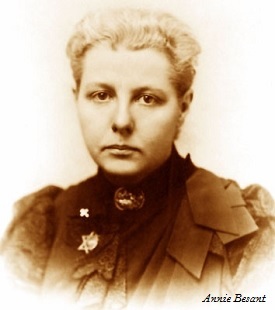Religious & Social Reforms
Many Indians realized that social and religious reformation was an essential condition for the all-round development of the country on modern lines and for the growth of national unity and solidarity.
After 1858, the earlier reforming tendency was broadened. The work of earlier reformers, like Raja Ram Mohan Roy and Pandit Vidyasagar, was carried further by major movements of religious and social reform.
Religious Reforms
Filled with the desire to adapt their society to the requirements of the modern world of science, democracy, and nationalism, and determined to let no obstacles stand in the way, thoughtful Indians set out to reform their traditional religions.
Brahmo Samaj
After 1843, the Brahmo tradition founded by Raja Ram Mohan Roy was carried forward by Devendranath Tagore and after 1866 by Keshub Chandra Sen.
Devendranath Tagore repudiated the doctrine that the Vedic scriptures were infallible.
The Brahmo Samaj made an effort to reform Hindu religion by removing abuses, by basing it on the worship of one God and on the teachings of the Vedas and Upanishads, and by incorporating the best aspects of modern western thought.
The Brahmo Samaj denied the need for a priestly class for interpreting religious writings. Every individual had the right and the capacity to decide with the help of his own intellect what was right and what was wrong in a religious book or principle.
The Brahmos were basically opposed to idolatry and superstitious practices and rituals, in fact, the entire Brahmanical system; they could worship one God without the mediation of the priest.
The Brahmos were also great social reformers. They actively opposed the caste system and child-marriage; and supported the general uplift of women, including widow remarriage, and the spread of modern education to men and women.
The Brahmo Samaj was weakened by internal dissentions in the second half of the 19th century.
Religious Reform in Maharashtra
Religious reform was begun in Bombay in 1840 by the Parmahans Mandali, Which aimed at fighting idolatry and the caste system.
The earliest religious reformer in Western India perhaps was Gopal Hari Deshmukh, known popularly as 'Lokahitwadi'. He wrote in Marathi, made powerful rationalist attacks on Hindu orthodoxy, and preached religious and social equality.
Later the Prarthana Samaj was started with the aim of reforming Hindu religious thought and practice in the light of modern knowledge.
It preached the worship of one God and tried to free religion of caste orthodoxy and priestly domination.
Two of its great leaders were R.G. Bhandarkar, the famous Sanskrit scholar and historian, and Mahadev Govind Ranade (1842-1901).
Prarthana Samaj was powerfully influenced by the Brahmo Samaj. Its activities also spread to South India as a result of the efforts of the Telugu reformer, Viresalingam.
Theosophical Society
The Theosophical Society was founded in the United States by Madam H.P. Blavatsky and Colonel H.S. Olcott, who later came to India and founded the headquarters of the Society at Adyar near Madras in 1886.

The Theosophist movement soon grew in India as a result of the leadership given to Mrs. Annie Besant who had come to India in 1893.
The Theosophists advocated the revival and strengthening of the ancient religion of Hinduism, Zoroastrianism, and Buddhism.
The Theosophists recognized the doctrine of the transmigration of the soul. They also preached the universal brotherhood of man.
It was a movement led by westerners who glorified Indian religions and philosophical tradition.
Theosophical movement helped Indians to recover their self-confidence, even though it tended to give them a sense of false pride in their past greatness.
One of Mrs. Besant's many achievements in India was the establishment of the Central Hindu School at Banaras which was later developed by Madan Mohan Malaviya into the Banaras Hindu University.
Religious Reform among Muslims
The Mohammedan Literary Society was founded at Calcutta in 1863. This Society promoted discussion of religious, social, and political questions in the light of modern ideas and encouraged upper and middle class Muslims to take to western education.
Religious Reform among Parsis
In 1851, the Rehnumai Mazdayasan Sabha or Religious Reform Association was started by Naoroji Furdonji, Dadabhai Naoroji, S.S. Bengalee, and others.
Religious Reform Association campaigned against the entrenched orthodoxy in the religious field and initiated the modernization of Parsi social customs regarding the education of women, marriage, and the social position of women in general.
Religious Reform among Sikhs
Religious reform among the Sikhs was begun at the end of the 19th century when the Khalsa College was started at Amritsar.
In 1920, the Akali Movement rose in Punjab. The main aim of the Akalis was to purify the management of the gurudwaras or Sikh shrines.
These gurudwaras had been heavily endowed with land and money by devout Sikhs. But they had come to be managed autocratically by corrupt and selfish mahants.
The Sikh masses led by the Akalis started in 1921 a powerful Satyagraha against the mahants and the Government which came to their aid.
The Akalis soon forced the Government to pass a new Sikh Gurudwaras Act in 1922, which was later amended in 1925.



